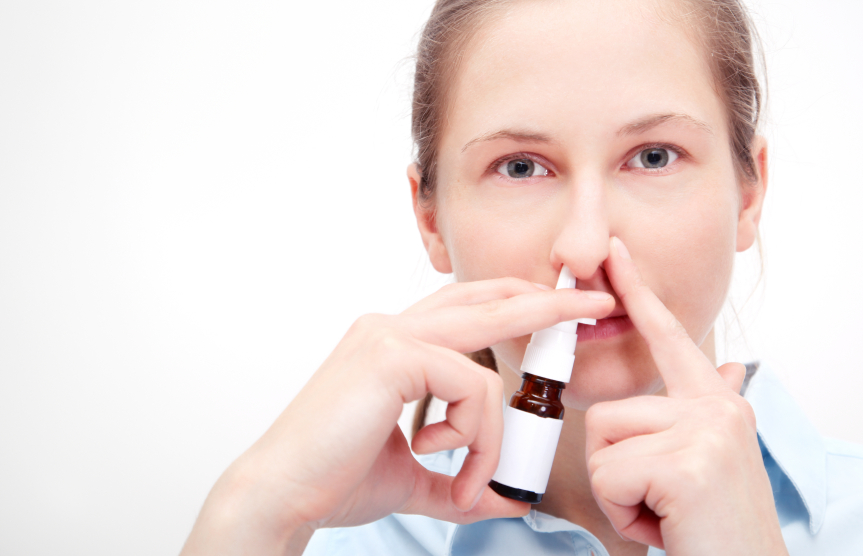Single Dose of Ketamine Reduces Suicidal Ideation
A systematic review and meta-analysis by Samuel T. Wilkinson and colleagues in the American Journal of Psychiatry analyzed individual patient data from 10 studies in which a single intravenous dose of ketamine was given to patients with suicidal ideation. The review included data from a total of 167 participants.
Wilkinson and colleagues found that ketamine reduced suicidal ideation within 24 hours, and these effects lasted for up to seven days. Mood also improved, but the reduction in suicidal ideation was independent of the degree of improvement in depression.
Among the participants, 54.9% were free of suicidal ideation at 24 hours after the infusion, 60.0% were free of suicidal ideation one week after the infusion, and 61.1% were free of suicidal ideation at two weeks.
Editor’s Note: The authors report that there is much to clarify about ketamine treatment before it can be used clinically to treat patients at risk for suicide. However, ketamine’s powerful and rapid effects offer an interesting alternative to other slow-acting treatment options, and could be an ideal acute treatment for patients arriving in an emergency room because of high suicide risk. A ketamine injection could be especially useful for those who are not admitted to the hospital, as it could produce anti-suicidal effects that could help carry a patient over until their next psychiatric appointment.
Intranasal Ketamine May Be an Alternative to IV in Refractory Depression
At the 2013 meeting of the American Academy of Child and Adolescent Psychiatry, Kyle Lapidus of Mount Sinai Hospital reviewed the literature from controlled studies on the efficacy of intravenous (IV) ketamine at a dosage of 0.5 mg/kg over a 40-minute infusion for adults with treatment-resistant depression (with consistent response rates of 50% or more), and suggested that intranasal ketamine may also be effective.
Ketamine is a strong blocker of the glutamate NMDA receptor. At high doses (6 to 12 mg/kg) it is an anesthetic, at slightly lower doses (3 to 4 mg/kg) it is psychotomimetic (causing psychotic symptoms) and is sometimes used as a drug of abuse, and at very low doses it is a rapidly acting antidepressant, often bringing about results within 2 hours. Antidepressant effects typically last 3 to 5 days, so the question of how to sustain these effects is a major one for the field.
Murrough et al. reported in Biological Psychiatry in 2012 that five subsequent infusions of ketamine sustained the initial antidepressant response and appeared to be well tolerated by the patients. Another NMDA antagonist, riluzole (used for the treatment of ALS or Lou Gehrig’s disease), did not sustain the acute effects of ketamine, and now lithium is being studied as a possible strategy for doing so.
The bioavailability of ketamine in the body depends on the way it is administered. Compared to IV administration, intramuscular (IM) administration is painful but results in 93% of the bioavailability of IV ketamine. Intranasal (IN) administration results in 25-50% of the bioavailability of IV administration, while oral administration results in only 16-20% of the bioavailability of IV administration, so Lapidus chose to study the IN route. He compared intranasal ketamine at doses of 50mg (administered in a mist ) to 0.5 ml of intranasal saline. Both were given in two infusions seven days apart. Lapidus observed good antidepressant effects and good tolerability. Papolos et al. had reported earlier that intranasal ketamine had good effects in a small open trial in treatment-resistant childhood onset bipolar disorder.
Editor’s Note: Further studies of the efficacy and tolerability of intranasal ketamine are eagerly awaited.
New Drug Produces Rapid-Onset Antidepressant Effects
 We have previously summarized studies on ketamine, which when given intravenously can bring about rapid-onset antidepressant effects. Ketamine is a full antagonist (or a blocker) of the glutamate NMDA receptors. Another drug currently in development may work in a related way.
We have previously summarized studies on ketamine, which when given intravenously can bring about rapid-onset antidepressant effects. Ketamine is a full antagonist (or a blocker) of the glutamate NMDA receptors. Another drug currently in development may work in a related way.
At a recent scientific meeting, researcher Sheldon Preskorn showed that the compound GLYX-13, a partial agonist at the glycine binding site of the NMDA receptor (meaning it allows partial function of the glycine receptors that aid NMDA receptor function), exerts rapid antidepressant effects like the full antagonist ketamine when administered intravenously compared to placebo. GLYX-13 allows about 25% of the receptor activity of the full agonists glycine or D-serine, and thus might result in a 75% inhibition of NMDA receptor function.
GLYX-13 did not induce any psychotomimetic effects (like delusion or delirium), which are possible with the full NMDA antagonist ketamine. The effects of GLYX-13 appeared within 24 hours, lasted at least 6 days, but were gone by day 14.
Editor’s Note: Long-term effectiveness of ketamine for treatment of depression is unclear, but in addition to its potential psychotomimetic effects, it can also be abused. Whether GLYX-13 may be easier to use, longer-lasting, or safer for longer-term clinical effectiveness remains a key question.
Ketamine for OCD
At a recent scientific meeting, researcher Carolyn Rodriguez presented a randomized controlled crossover trial of ketamine in obsessive-compulsive disorder (OCD). In contrast to a previous negative study by Block and associates at the National Institute of Mental Health (NIMH), these investigators found that intravenous (IV) infusion of ketamine (0.5 mg/kg over 40 minutes) was associated with a larger reduction in obsessive-compulsive symptoms when compared with saline infusion. These effects were rapid in onset and persisted for approximately one week in 50% of the patients with OCD who had constant intrusive thoughts.
This dose of ketamine had previously been shown to induce rapid-onset improvement in depression and suicidal ideation in those with unipolar and bipolar depression. However, the improvement in obsessive-compulsive disorder symptoms appeared unrelated to any antidepressant effect because the individuals with OCD had minimal depressive symptoms at baseline.
The traditional pharmacological treatments for OCD are selective serotonin reuptake inhibitor (SSRI) antidepressants, which require high doses and weeks to months before the onset of full effect. In contrast, Rodriguez et al. found a 90% response rate to IV ketamine within 3 hours.
Ketamine is a blocker of the glutamate NMDA receptors, and these data suggest that targeting these receptors can induce rapid onset of positive effects in OCD. However, as is the case with the acute antidepressant response to ketamine in those with depression, the best ways to extend this therapeutic effect long-term remain to be determined.
Another blocker of NMDA receptors, the anti-Alzheimer’s drug memantine (Namenda), has been reported in open studies to show improvement in those with OCD as well. N-acetylcysteine, a substance found in health-food stores, likewise appears to re-regulate a hyper-responsive glutamatergic system in the nucleus accumbens by other mechanisms, and was also shown to have efficacy as an augmenting treatment in OCD in those who are inadequately responsive to SSRIs in a 2012 article by Afshaw et al.
Editor’s Note: Taken together, the data with ketamine, memantine, and N-acetylcysteine suggest that glutamate-based mechanisms are involved in OCD and may provide an alternative target for therapeutics in addition to serotonin.
New Findings On IV Ketamine For Treatment-Resistant Depression
We’ve written before about the rapid-onset antidepressant effects of ketamine, an anesthetic that is used in human and veterinary medicine. At lower doses, intravenous (IV) ketamine can induce antidepressant effects in both unipolar and bipolar depressed patients. When doses of 0.5mg/kg are infused over a period of 40 minutes, antidepressant effects appear within two hours but are short-lived, typically lasting only three to five days. Results have been consistent across studies at Yale University, the Icahn School of Medicine at Mount Sinai, and the National Institute of Mental Health. So far, clinical use has been limited by the short duration of the effects and the required presence of an anesthesiologist, which can be prohibitively expensive for many patients.
In a cover story in the January 2013 issue of Psychiatric Times, Arline Kaplan reviewed new findings about ketamine. The drug is a high-affinity, noncompetitive NMDA-glutamate receptor antagonist. It is not yet FDA-approved for use in depression.
According to a recent article by Murrough and Charney, response rates to ketamine are around 54% and the drug “appears to be effective at reducing the range of depressive symptoms, including sadness, anhedonia [the loss of ability to experience pleasure], low energy, impaired concentration, negative cognitions, and suicidal ideation.”
David Feifel, Director of the Neuropsychiatry and Behavioral Medicine Program at the University of California at San Diego (UCSD), instituted a program there in which patients can receive treatment with ketamine for clinical purposes (rather than for research) after signing detailed informed consent forms and being warned that the treatment is not yet approved for depression and that its effects may be temporary. The UCSD Medical Center’s Pharmacy and Therapeutics Committee, with the support of the anesthesiology department, agreed that nurses may administer the ketamine in an outpatient setting, making the procedure more affordable.
There is still the question of how to make ketamine’s effects last. Read more




